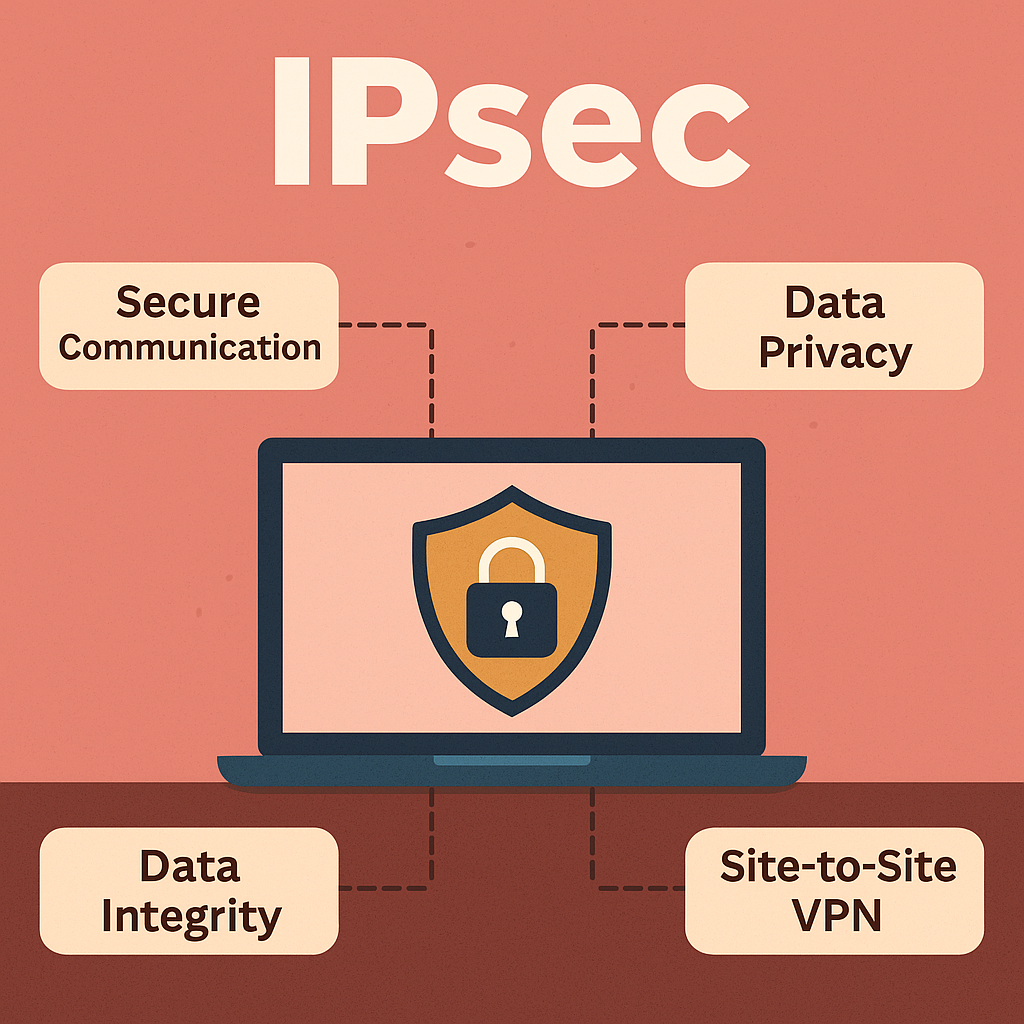What Is IPsec?
Let’s start with the basics.
IPsec, or Internet Protocol Security, isn’t just one protocol — it’s a framework of protocols designed to secure communication over IP networks. In simpler words, IPsec is like a virtual bodyguard for your data — it ensures that whatever travels across the internet remains private, tamper-proof, and authentic.
Think of IPsec as a toolkit that helps your device lock down data packets before they leave your system and then unlock them safely at the destination.
It operates at Layer 3 (Network Layer) of the OSI model — which is why it can protect everything running over IP: TCP, UDP, ICMP, etc.
The Purpose of IPsec — Why Was It Created?
So why did we even need something like IPsec?
Because the internet was never designed with security in mind.
When data travels from one device to another over the internet, it hops across multiple routers, switches, and intermediate networks. Without encryption, anyone along the way could intercept or even modify your data — hackers, rogue ISPs, malicious insiders.
That’s where IPsec steps in — to:
- Encrypt the data, making it unreadable to outsiders
- Authenticate both ends of the communication to ensure trust
- Protect data integrity, so no one can change the content in transit
Why Is IPsec Needed?
Let’s make this relatable.
Imagine you’re sending a confidential letter through the postal service. Without any protection, anyone could open the envelope, read your message, change it, or replace it. Scary, right?
Now imagine sealing the letter in an encrypted vault. Not only is it impossible to read without the right key, but it also leaves behind a digital fingerprint. If anyone tries to tamper with it — you’ll know.
That’s exactly what IPsec does for your digital data. It’s essential because:
- The internet is a shared, public medium.
- Cyberattacks like spoofing, tampering, and eavesdropping are real and common.
- Regulatory compliance in industries like healthcare, finance, and defense requires secure communication.
Real-World Use Cases of IPsec
Let’s bring this down to earth — where and how is IPsec actually used?
- Site-to-Site VPN
Imagine a company with offices in Mumbai and Delhi. They want secure communication between their office networks.
With a Site-to-Site IPsec VPN, both routers at the office gateways form a secure tunnel, allowing employees in both locations to access files, apps, and services securely — as if they were on the same local network.
- Remote Access VPN
Let’s say you’re working from home and need to access your company’s internal network securely.
A Remote Access VPN using IPsec allows you to connect to the company network as if you were sitting right in the office — safely encrypted over the internet.
- Cloud Connectivity
Cloud providers (like AWS, Azure, or GCP) often use IPsec tunnels to securely connect customer on-premises networks to their cloud infrastructure.
- Mobile Workforce
Sales teams or remote engineers can connect securely to HQ using IPsec VPNs on their laptops or mobile devices.
Key Features of IPsec VPN – In Depth
Let’s break down what makes IPsec so powerful:
1. Strong Encryption
IPsec uses powerful encryption algorithms (like AES-256) to convert your readable data into gibberish for anyone who tries to intercept it. Only the intended receiver with the right key can decrypt and understand the message.
2. Data Integrity
It ensures the data hasn’t been modified in transit. Even if one bit changes, IPsec knows — and drops the packet. Think of it as a digital fingerprint for every message.
3. Authentication
Both sender and receiver are verified before communication begins. This is done using pre-shared keys or digital certificates. No identity = no access.
4. Replays Are Blocked
IPsec prevents attackers from capturing your packet and sending it again (a replay attack). It uses sequence numbers and anti-replay windows to catch and drop duplicates.
5. Two Modes: Tunnel and Transport
- Tunnel Mode: Used between two networks (e.g., site-to-site). It encrypts entire IP packets and wraps them with a new IP header.
- Transport Mode: Used between devices. It only encrypts the payload, not the IP header.
6. Transparent to Applications
Because IPsec works at the network layer, applications don’t need to know anything about it. Your Zoom calls, banking app, or email all stay protected without changing a line of code.
7. Supports NAT Traversal
IPsec can work even when devices are behind NAT routers (common in home and office networks), thanks to a feature called NAT-T (NAT Traversal).
In Summary
- IPsec is not a single protocol; it’s a powerful framework for secure IP communication.
- It ensures confidentiality, integrity, and authenticity of your data over the internet.
- IPsec is widely used for VPNs, cloud connectivity, remote access, and secure site-to-site communication.
- Its key features — encryption, authentication, replay protection, and flexibility — make it a gold standard in network security.

